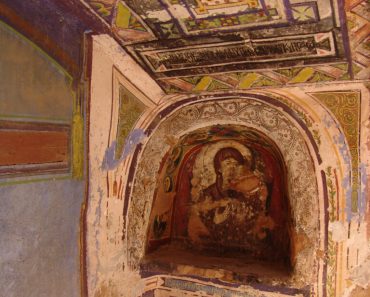Recent archaeological excavations in southwestern Turkey have unearthed a remarkably preserved 2,050-year-old council building that once served as the political and judicial nerve center of the ancient Roman city of Laodicea. The discovery, made during the 2025 excavation season in Denizli province, marks a significant milestone in over two decades of archaeological work at this historically rich site. This extraordinary find sheds new light on the administrative sophistication of Roman urban planning and governance in ancient Anatolia.
The structure, dating to the late first century BC, represents a unique architectural achievement with its distinctive pentagonal outer walls and hexagonal interior design. This architectural layout has never before been documented in ancient Anatolia, making the discovery particularly significant for understanding regional building traditions during the Roman period reports Türkiye Today.

Aerial view of the 2,050-year-old council building discovered during excavations in the ancient city of Laodicea. (AA Photo via Türkiye Today)
Theater-Style Assembly Hall With Named Seats
The council building functioned as what archaeologists term a bouleuterion, a specialized structure designed to house the citizen council of a city-state. The theater-type building contained 17 seating tiers that could accommodate between 600 and 800 members, including elders, youth representatives, and citizens who gathered to govern the city. Archaeological evidence suggests this assembly hall served dual purposes as both a political deliberation center and judicial proceedings venue.
Names engraved on individual seats helped researchers identify the roles and status of various council members, providing unprecedented insights into the hierarchical structure of Roman municipal government. A particularly intriguing discovery is a seated statue, likely representing the city’s chief judge or magistrate, whose head was replaced in the fifth century AD, suggesting changes in leadership or political restructuring during the later Roman period notes Archaeology Magazine.
Architectural Innovation in Ancient Anatolia
The building’s unique pentagonal and hexagonal design represents a significant departure from typical Roman architectural conventions and stands as the first documented example of such construction in ancient Anatolia. This innovative approach to municipal building design demonstrates the creative adaptation of Roman administrative architecture to local conditions and preferences. The structure remained in continuous use until the seventh century AD, testament to its functional effectiveness and architectural durability.
Archaeological investigations reveal that the council building was strategically positioned within Laodicea’s urban core, surrounded by key civic infrastructure including a political agora, archive halls, a magnificent bath complex, and the region’s largest stadium. This careful urban planning reflects the sophisticated administrative organization that characterized major Roman provincial centers during the height of the empire.

Interior view of the council building showing preserved seating tiers. (AA Photo via Türkiye Today)
Laodicea’s Rich Archaeological Heritage
Laodicea’s history extends far beyond its Roman period prominence, with archaeological evidence revealing continuous occupation dating back to approximately 5500 BC. The city’s strategic location made it a crucial administrative and commercial hub throughout antiquity, particularly during the Roman era when it served as a major regional center for both secular governance and early Christian communities.
Previous excavations at the site have yielded remarkable discoveries that illustrate Laodicea’s historical significance, including elaborately frescoed travertine blocks, a nearly ten-foot statue of Roman Emperor Trajan, the ornate Traian Fountain, priestly sculptures, and a dramatic sculptural group depicting Scylla, the mythical sea monster from Homer’s Odyssey. These archaeological treasures collectively demonstrate Laodicea’s status as one of the leading Roman administrative and judicial centers in ancient Anatolia.
It’s all Ancient Funa and Games E book, from the Ancient Origins Store.
The site’s inclusion on UNESCO’s World Heritage Tentative List reflects its exceptional universal value and the ongoing commitment to preserving and understanding this remarkable window into ancient Roman urban civilization. Current excavation and restoration work, which has continued for 22 years, continues to reveal new insights about ancient administrative practices and the sophisticated governance structures that characterized Roman provincial cities.
As excavations continue, researchers anticipate uncovering additional evidence that will further illuminate the sophisticated administrative systems that helped maintain Roman control and cultural influence across their vast territorial holdings.
Top image: A view of 2,050-year-old council building unearthed during this year’s excavations in the ancient city of Laodicea. Source: AA Photo via Türkiye Today
By Gary Manners





 QuinnBrak:Pixabay.png-370x297.jpg)

